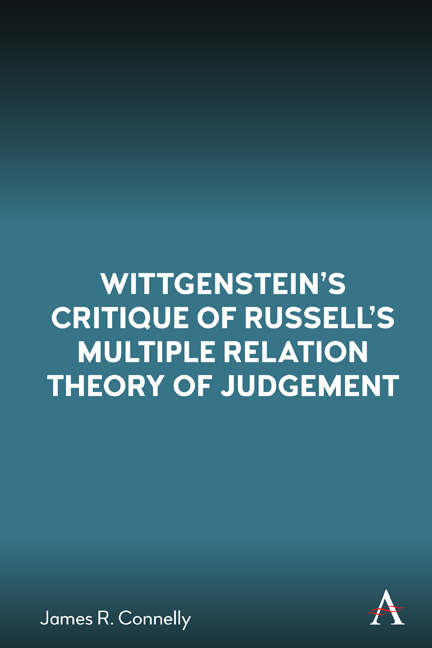2 - The Scholarly Controversy
Published online by Cambridge University Press: 06 April 2021
Summary
The Direction Problems
When explicating the basic features of the MRTJ in Section 1.4, we identified and gave a rudimentary exposition of the so-called narrow direction problem (ND). Alongside the ‘wide direction problem’ (WD), ND is one of two distinct but interrelated problems for Russell's MRTJ, an appreciation of which is integral to understanding the scholarly controversy surrounding Wittgenstein's critique of the MRTJ. WD and ND are sometimes referred to in the scholarly literature as two distinct versions of the ‘direction problem’ and at other times, alternatively, as two distinct ‘direction problems’. Nothing of particular philosophical importance hinges on whether we refer to them one way or the other, and thus, in the interest of clarity, I will henceforth follow Stevens (2018) in referring to them as two distinct direction problems, ND and WD, respectively.
In broad strokes, and as we saw in Section 1.4, ND is simply the problem of distinguishing, for example, Othello's belief that Desdemona loves Cassio from Othello's belief that Cassio loves Desdemona. While Russell deploys this particular pair of beliefs for illustrative purposes in chapter XII of Problems of Philosophy, it is, in general, a problem which can emerge for any two beliefs, such as these, which have all and only the same constituents. Recall that in the MRTJ, judgement is a multiple relation between a judging subject and the various constituents of this judgement taken severally. But then, since each of these two judgements has the same subject and constituents, how can they express different beliefs and possess distinct truth-conditions? Following Stevens (2018), we can represent the first of Othello's candidate beliefs semiformally as follows:
J(o, d, L, c).
Here ‘J’ is the relation of judgement (or belief), ‘o’ stands for Othello, ‘d’ for Desdemona, ‘L’ for the relation ‘loves’ and ‘c’ for Cassio. Within this judgement, each of ‘o’, ‘d’ and ‘c’ stands for particulars, whereas ‘L’ stands for a universal. The judging relation is, in this case, a four-place ‘relating relation’ which unites the other constituents of the judgement. ‘Loves’ is called the ‘subordinate relation’.
- Type
- Chapter
- Information
- Publisher: Anthem PressPrint publication year: 2021



